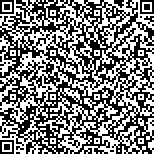| 本文已被:浏览 2256次 下载 2991次 |

码上扫一扫! |
| N-3多聚不饱和脂肪酸抑制氧化应激途径对犬无菌性心包炎所致房颤的影响 |
| 张中1,单守勤1,郑强荪2,赵晋波3,阎春草1,石桦1,孔令媛4* |
|
|
(1. 济南军区青岛第一疗养院, 青岛 266071;
2. 第四军医大学唐都医院心血管内科, 西安 710038;
3. 第四军医大学唐都医院胸外科, 西安 710038;
4. 济南军区联勤部卫生部保健办, 济南 250022
*通信作者) |
|
| 摘要: |
| 目的 采用犬无菌性心包炎模型检验n-3多聚不饱和脂肪酸(polyunsaturated fatty acids, PUFAs)对房颤的影响及其对心房内氧化应激状态的影响。方法 20只犬随机分为对照组和PUFAs组,分别行开胸造无菌性心包炎模型。PUFAs组实验开始前4周给予PUFAs 2 g/d,术前和术后第2天分别测量心房各项电生理学指标(AF的诱导性和持续性指标、心房有效不应期、房内传导时间),并采用蛋白质印迹法检测心房组织中 3-硝基酪氨酸水平。结果 术前两组间心房各项电生理学指标间差异无统计学意义。术后第2天与对照组相比,PUFAs组房颤可诱导性[(11.0±7.4)% vs (28.0±10.3)%, P<0.001]和持续性[房颤时程中位数: 1 105(655.8~1 406.5) s vs 2 516.5 (1 187~3 361) s, P<0.05]降低,并且心房有效不应期延长[(133.4±4.1) ms vs (129.8±4.3) ms, P<0.05)],房内传导时间缩短[(46.6±4.4) ms vs (51.9±4.8) ms, P<0.05],心房组织3-硝基酪氨酸水平降低(P<0.000 1)。结论 PUFAs可以降低术后房颤的发生危险,其对氧化应激反应的抑制作用可能是其作用于房颤的机制之一。 |
| 关键词: 心房颤动 n-3多聚不饱和脂肪酸 氧化性应激 心包炎 |
| DOI:10.3724/SP.J.1008.2014.01066 |
| 投稿时间:2014-02-19修订日期:2014-06-26 |
| 基金项目:青岛市市南区公共领域科技支撑项目(2012-5-026-YY). |
|
| N-3 polyunsaturated fatty acids prevents sterile pericarditis-induced atrial fibrillation by inhibiting oxidative stress in canine |
| ZHANG Zhong1,SHAN Shou-qin1,ZHENG Qiang-sun2,ZHAO Jin-bo3,YAN Chun-cao1,SHI Hua1,KONG Ling-yuan4* |
(1. The First Sanitorium of Qingdao, PLA Jinan Military Area Command, Qingdao 266071, Shandong, China;
2. Department of Cardiovasology, Tangdu Hospital, Fourth Military Medical University, Xi'an 710038, Shaanxi, China;
3. Department of Thoracic Surgery, Tangdu Hospital, Fourth Military Medical University, Xi'an 710038, Shaanxi, China;
4. The Health Care Room, Health Sector, Joint Service Department of PLA Jinan Military Area Command, Jinan 250022, Shandong, China
*Corresponding authors) |
| Abstract: |
| Objective To study the anti-arrhythmic and anti-oxidative stress effects of n-3 polyunsaturated fatty acids (PUFAs) in a canine sterile pericarditis model. Methods A total of 20 dogs were randomly assigned to two groups: a control group (10 dogs) and a PUFAs treatment group (10 dogs), with sterile pericarditis created by open-chest operation in both groups. PUFAs was administered orally (2 g/d) 4 weeks before the operation until the end of the study. The inducibility and maintenance of atrial fibrillation (AF), atrial effective refractory period (AERPs), and intra-atrial conduction time were determined before and 2 days after the operation. And the level of 3-nitrotyrosine in the atrial tissue was determined by Western blotting analysis. Results The electrophysiology parameters were similar between the two groups. On day 2 after operation, the PUFAs group compared with the control group had a significantly lower AF inducibility ([11.0±7.4]% vs [28.0±10.3]%, P<0.001) and maintenance (median AF duration: 1 105 [655.8-1 406.5] s vs 2 516.5 [1 187-3 361] s, P<0.05), a significantly longer AERP ([133.4±4.1] ms vs [129.8±4.3] ms, P<0.05), and a significantly shorter intra-atrial conduction time ([46.6±4.4] vs [51.9±4.8] ms, P<0.05). Western blotting analysis showed that 3-nitrotyrosine level in the atrial tissue of PUFAs group was significantly lower than that of the control group (P<0.000 1). Conclusion Dietary PUFAs supplementation can reduce the risk of AF after operation, and its anti-oxidative stress effect might be one of the mechanisms. |
| Key words: atrial fibrillation n-3 polyunsaturated fatty acids oxidative stress pericarditis |
.jpg)
.jpg)